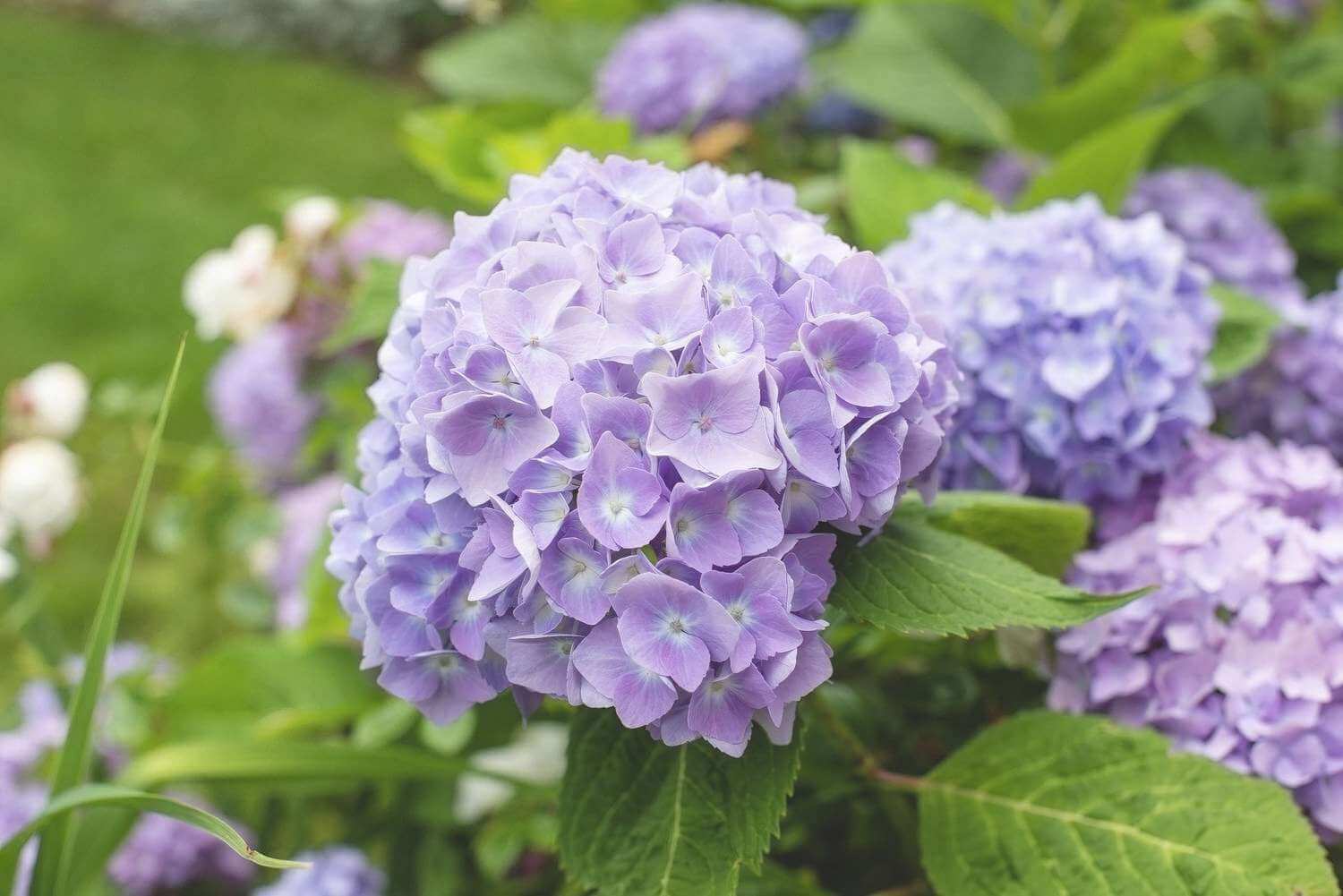
Hydrangeas are beloved for their stunning flower heads and versatile nature, making them a favorite among garden enthusiasts. From their vibrant colors to their ability to thrive in various conditions, hydrangeas are a delightful addition to any garden.
In this guide, we’ll explore everything you need to know to care for these beautiful shrubs and ensure they flourish year after year.
Light
Hydrangeas thrive in partial shade, particularly when provided by tall deciduous trees. Morning sun paired with afternoon shade is ideal, as excessive shade can diminish flower production. While hydrangeas can tolerate full sun, extra watering may be necessary during hot summer days to prevent wilting.
Soil
Fertile, humus-rich soil is key to healthy hydrangea growth. One fascinating aspect of Hydrangea macrophylla is its ability to change bloom color based on soil pH. Acidic soil yields blue blooms, while alkaline soil produces pink flowers. Aim for a pH of 6.0 or lower for blue blooms and 7.0 or higher for pink blooms.
Water
Consistent moisture is essential for hydrangeas throughout the growing season. Deep watering once or twice a week is recommended, adjusting frequency based on weather conditions. During periods of extreme heat, increase watering to ensure the soil remains damp but not waterlogged. To gauge watering needs, check the soil moisture by inserting your finger about 4 inches into the ground.
Temperature and Humidity
Moderate temperatures and high humidity levels are ideal for hydrangeas. In regions with harsh winters, protect plants from cold winds by wrapping them in burlap or providing additional insulation. Plant hydrangeas in north- or east-facing locations to minimize exposure to winter sun, which can cause premature bud swelling and vulnerability to cold snaps.
Fertilizer
Avoid over-fertilizing hydrangeas, as excessive nitrogen can result in lush foliage but fewer blooms. If the soil lacks nutrients, apply a layer of organic compost in spring or use a fertilizer formulated for flowering shrubs. Remember to follow application instructions carefully to avoid nutrient imbalance.
Types of Hydrangea
Several hydrangea species are commonly cultivated for their ornamental beauty:
- Hydrangea macrophylla: Also known as bigleaf or mophead hydrangea, this species produces large, showy blooms and sets buds for the following year in midsummer through fall.
- Hydrangea arborescens: Commonly referred to as smooth hydrangea, this variety features white to pink flowers and sets buds on new stems in spring.
- Hydrangea quercifolia: Oakleaf hydrangea boasts distinctive foliage resembling that of an oak tree and sets buds in midsummer through fall.
- Hydrangea paniculata: Panicle hydrangea displays cone-shaped blooms that change color as they mature, growing on new stem growth.
Pruning
The timing and method of pruning depend on the hydrangea species and bud-setting behavior. To avoid inadvertently removing buds, familiarize yourself with your hydrangea’s blooming pattern and prune accordingly.
Propagating Hydrangea
While hydrangeas are typically propagated from cuttings rather than seeds, there are two primary methods:
- Propagation by cuttings: Select healthy stems in early fall, root them in moist soil, and transplant once roots develop.
- Propagation by rooting branches: Bend a stem to touch the soil, secure it in place, and wait for roots to form before detaching and transplanting.
Potting and Repotting Hydrangea
For compact hydrangea varieties suitable for containers, choose pots with ample drainage and sufficient space for root growth. Repot every three to five years to accommodate root expansion and ensure optimal plant health.
Overwintering
Protect hydrangeas from winter damage by shielding them from cold winds and insulating the soil with burlap or other materials. Remove protective coverings once the risk of frost has passed and buds begin to swell.
Common Pests & Plant Diseases
Hydrangeas may be susceptible to pests such as aphids and spider mites, as well as diseases like botrytis blight and powdery mildew. Monitor plants regularly and use appropriate measures to control infestations and infections.
How to Get Hydrangeas to Bloom
Factors such as sunlight, soil pH, and watering practices influence hydrangea bloom production. Adjust care routines as needed to promote healthy growth and abundant flowering.
Caring for Hydrangea After It Blooms
Leave spent flowers for winter interest or deadhead them to encourage continued blooming. Avoid excessive pruning in late fall to preserve buds for the following year.
Common Problems With Hydrangea
Address issues such as non-blooming, drooping leaves, and yellowing foliage by identifying and addressing underlying causes such as improper watering or nutrient imbalance.
While possible, indoor cultivation of hydrangeas can be challenging due to temperature and humidity requirements.
Adjust soil pH to influence bloom color, with acidic soil yielding blue flowers and alkaline soil producing pink blooms.
Understanding your hydrangea’s blooming behavior helps determine the best pruning approach and timing.
Yes, with patience and proper pruning, some hydrangea varieties can be trained into small flowering trees.